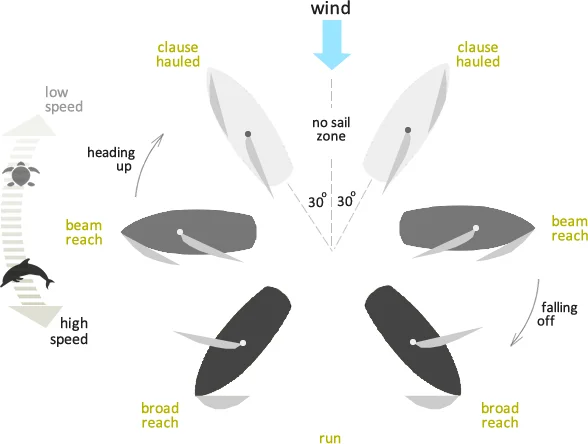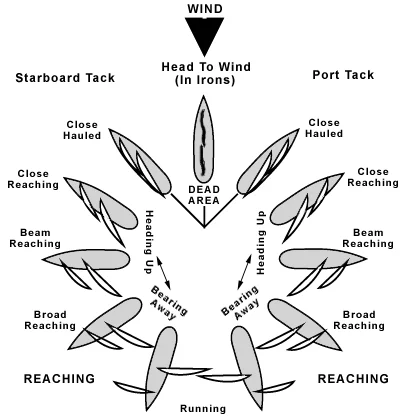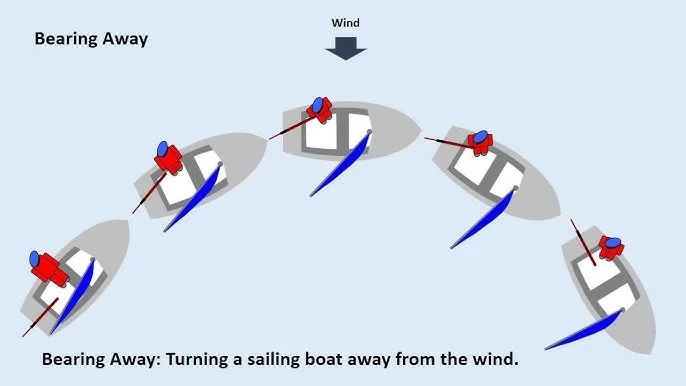LoveSail offers the joy of sailing in the beautiful bays of Fethiye with its expertise in sailing and catamaran rental services. As our guests explore the natural beauty of Fethiye, we will share important wind types to consider for a pleasant and safe sailing experience. The direction, speed of the wind, and sailing types are among the most crucial factors that determine your sea adventure.

Wind Types and Sailing Conditions
A sailing vessel typically sails by receiving wind from either the starboard (right) or port (left) side. The direction of the wind creates various sailing conditions based on the angle relative to the vessel’s hull. A 0-degree angle is considered the front of the vessel, and each angle dictated by the wind direction defines a separate sailing type. At LoveSail, we’ve compiled an overview of some fundamental sailing maneuvers:
Beating This type of sailing maneuver is performed by creating a 45-degree angle between the wind and the vessel’s hull. Beating occurs at the narrowest angle of the wind and provides increased lift. In this position, the sails are tensioned, and the vessel maximizes the use of the wind to gain speed. Experienced sailors learn to use the wind effectively while beating to make precise maneuvers.
Close Reach This is when the wind is received between 45-90 degrees. In this position, the vessel sails in a dynamic balance while gaining both speed and maneuverability. Properly adjusting the sails according to the wind angle is critical for achieving maximum performance. This sailing type offers a challenging yet instructive experience for both novice and experienced sailors.
Beam Reach When the wind is at a 90-degree angle to the vessel’s hull, this maneuver allows for a stable sailing experience. In a beam reach, the sails are fully deployed, enabling the vessel to take maximum advantage of the wind’s power and speed up. Sailing on a beam reach enhances stability and provides sailors with a pleasant sailing experience.
Broad Reach For wind angles between 90-150 degrees, vessels can achieve high speeds. The vessel gains significant momentum towards the wind direction with reduced resistance. In this position, the sails are fully unfurled, generating dynamic power. Sailing on a broad reach allows the sailor’s spirit to roam freely, creating a thrilling sensation of gliding over the waves.
Running When the wind falls between 150-180 degrees, the sailing vessel moves with the wind behind it. In a running maneuver, the vessel can reach maximum speeds. However, caution is advised in this position, as strong winds and waves can make the vessel difficult to control. Ensuring that the sails are trimmed optimally during running is crucial for the vessel’s stability and safety.

Sail Adjustments and Commands
When adjusting these sailing maneuvers, the commands “rise” for turning into the wind, “fall” for turning away from it, “trim” for adjusting the sails or “bear away” for changing course are utilized. These commands help in effectively adjusting the sails and improving the vessel’s performance. Paying attention to these factors will ensure a more effective and enjoyable sailing experience.







